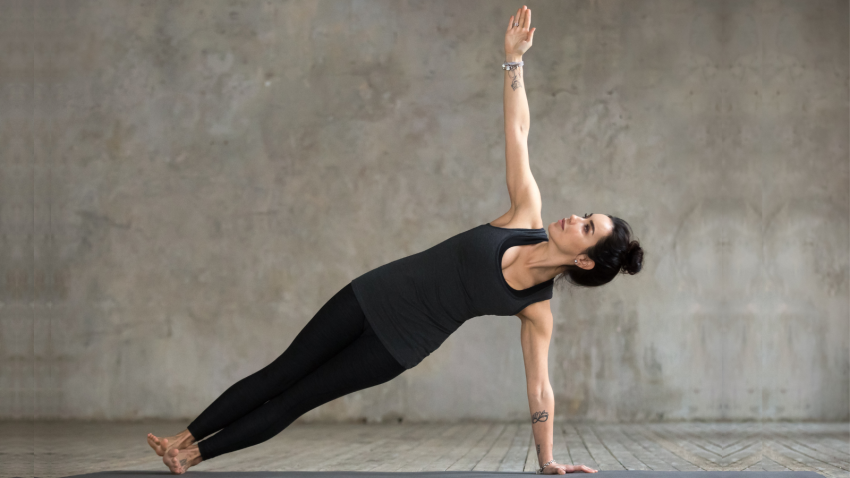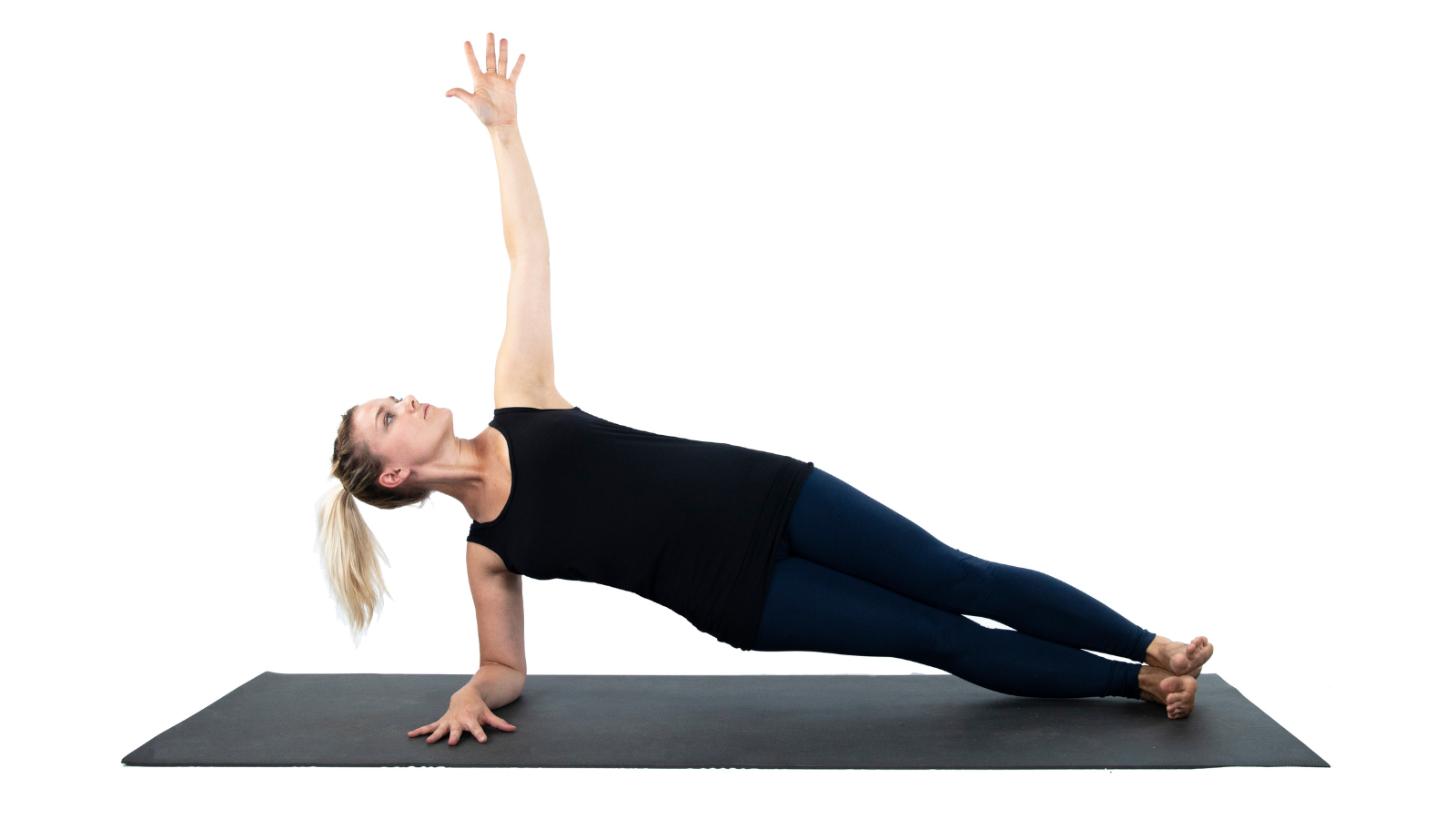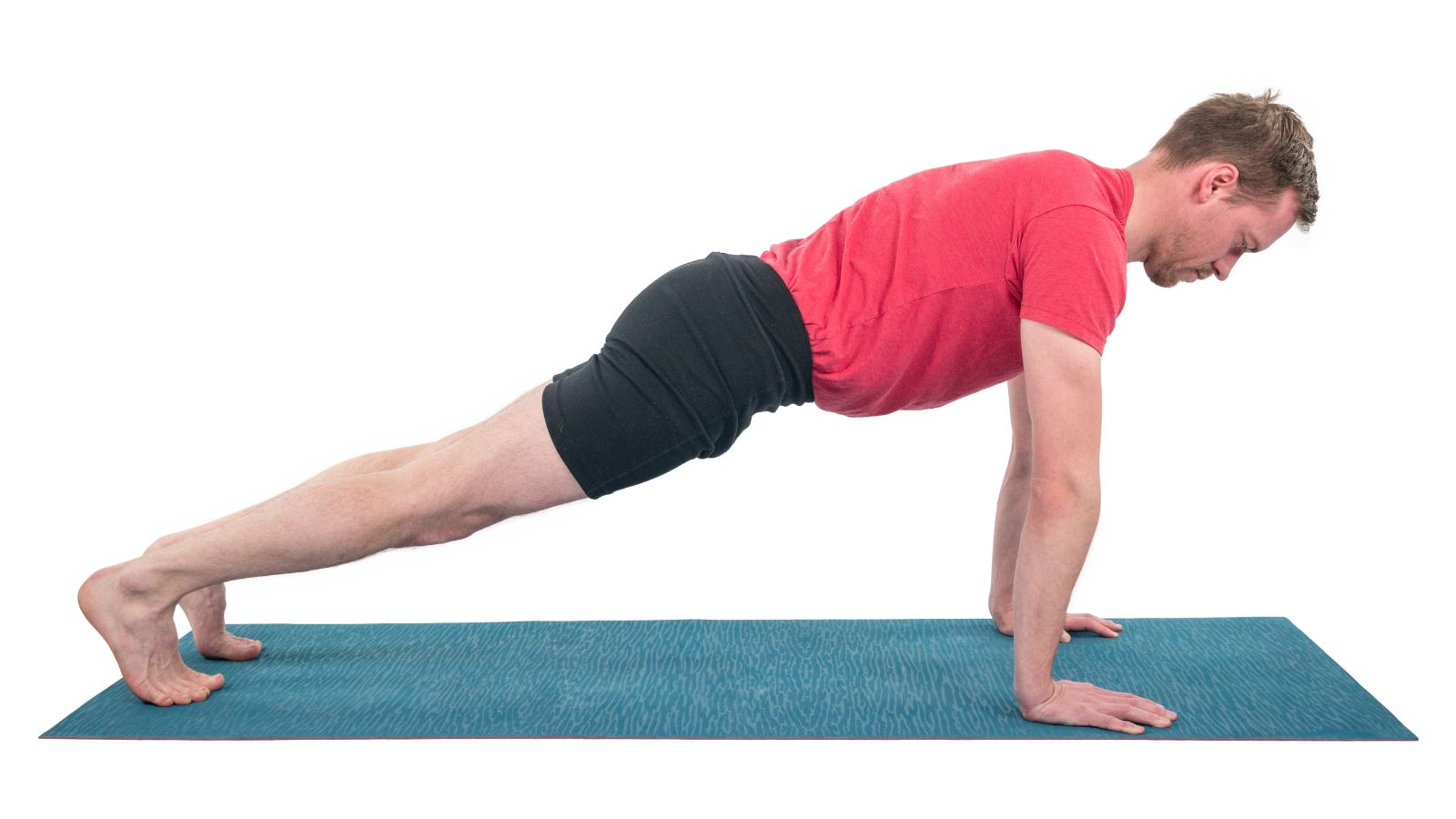View basket (0 items $0.00)

Yoga Pose Primer: Side Plank Pose (Vasisthasana)
If you practice yoga, you probably favor some poses over others. Most of us like the poses that are easy for us as well as the ones that show off our strengths. The others, not so much. In my 40 years of practice, almost every doable pose has been a favorite, at least for a while. Every pose influences the mind-body in a different way at life’s different junctures. So all yoga asanas have fallen in and out of favor for me, sometimes multiple times. Side Plank Pose (Vasisthasana) is one of the few that has never been a favorite.
Perhaps that’s why I practice it. I don’t love it, but I practice it because it helps strengthen my core. Poses that require—and show off—my flexibility are a lot more fun. But Side Plank Pose challenges me in less comfortable ways. And sometimes, leaving my comfort zone is far more interesting than doing what feels good.
Vasistha’s Cow Of Plenty
Vasisthasana is named for the sage Vasistha. Legend has it that he owned Nandini, the “cow of plenty,” who could instantly grant any of his wishes for material riches. Vasistha was a selfless being who wasn’t swayed by the temptations of earthly wealth. He employed Nandini’s talents in the interest of generosity to others.
Yogic lore contains many stories about covetous greedheads who tried their best to wrest this cow of infinite pleasure away from Vasistha. They were never successful, of course. Vasistha’s selfless virtue always won out.
Vasistha is known for having taught about the happiness of forgoing fleeting material pleasures in favor of an ultimately more satisfying—and far more difficult to attain—happiness that comes with living a simpler, more introspective life.
 Side Plank Pose: Basics, Benefits, and Variations
Side Plank Pose: Basics, Benefits, and Variations
Like the sage’s chosen life, Vasisthasana, the pose, is quite simple. It is Tadasana (Mountain Pose), the most basic of standing poses, practiced in a different relationship to gravity. But despite its simplicity, practicing Side Plank Pose requires strength, balance, and concentration. It also builds them quite powerfully.
On a physical level, the pose strengthens and tones your abdomen, shoulder girdle, low back, gluteal muscles, and legs. It simultaneously strengthens and stretches your wrists. The expansive shape of the pose is said to reduce depression and anxiety, while its strengthening qualities increase confidence, determination, and willpower. Vasisthasana also helps us develop the skill of balancing.
 For people with hand or wrist issues such as carpal tunnel syndrome, Side Plank Pose may not be the best choice. However, practicing the pose on your forearm instead of your hand is perfectly fine.
For people with hand or wrist issues such as carpal tunnel syndrome, Side Plank Pose may not be the best choice. However, practicing the pose on your forearm instead of your hand is perfectly fine.
How To Practice Side Plank Pose
-
Begin in a simple Phalakasana (Plank Pose), arms straight—like the “up” portion of a push-up—on a yoga mat. Press your palms into your mat as you lift up through your shoulders.

-
If you’d like to practice on your forearms instead of your wrists, start in Forearm Plank Pose (Ardha Phalakasana) with your forearms parallel to the long edges of your mat.
-
Turn onto the outside of your right foot, stacking your left foot on top of it. Rotate your entire body to face forward. If you’re practicing on your forearm, turn your forearm 90 degrees so that it’s perpendicular to your body.
-
Press your right hand—or forearm—evenly from heel to fingers, inside to outside, into the floor as you raise your left arm up toward the sky.
-
Make sure your pelvis is lifting up, aligned with the rest of your torso rather than sagging toward the floor, a position that can place extra strain on your wrist. Lifting the pelvis engages the core muscles on the bottom side of your body.
-
Take 5 to 10 deep breaths, simultaneously grounding your right hand or forearm as you expand your left arm upward. Return to Plank Pose and repeat on the other side.
Side Plank Pose Variations
-
If your balance feels shaky, you can place the toes of your top foot on the floor slightly in front of your bottom foot.
-
If your arms are not ready to bear the weight of the rest of your body, try bending the knee of your bottom leg and supporting yourself on your knee, shin and leg. This variation is also appropriate if your wrist is uncomfortable or compromised in some way.
Going Against The Grain—In Side Plank Pose And Beyond
The traditional path of yoga is one of renunciation and the freedom that comes from renouncing our addiction to worldly pleasures—material goods and pleasant experiences. It is not, mind you, renouncing the things themselves but our never-ending dependence on them for our happiness.
Originally, the practice of yoga went against the grain. Those who practiced it lived outside the mainstream, giving up the things the rest of society endlessly strived for. Vasisthasana can teach us about the benefits of orienting our lives toward those things that don’t bring instant gratification but rather a subtler, deeper, and more lasting sense of well-being.
Reprinted with permission from Charlotte Bell/Hugger Mugger Yoga Products.

Charlotte Bell began practicing yoga in 1982 and began teaching in 1986. She was certified by B.K.S. Iyengar in 1989 following a trip to Pune. In 1986, she began practicing Insight Meditation with her mentors Pujari and Abhilasha Keays. Her asana classes blend mindfulness with physical movement. Charlotte writes a column for Catalyst Magazine and serves as editor for Yoga U Online. She is the author of three books: Mindful Yoga, Mindful Life, and Yoga for Meditators, both published by Rodmell Press; and Hip-Healthy Asana: The Yoga Practitioner’s Guide to Protecting the Hips and Avoiding SI Joint Pain, published by Shambhala Publications. She also edits Hugger Mugger Yoga Products' blog and is a founding board member for GreenTREE Yoga, a non-profit that brings yoga to underserved populations. A lifelong musician, she plays oboe and English horn in the Salt Lake Symphony and the folk sextet Red Rock Rondo whose 2010 PBS music special won two Emmys.
Featured Courses










